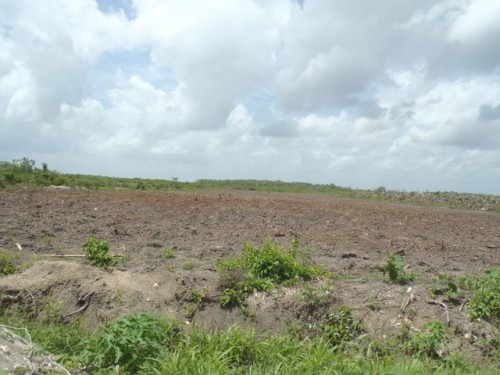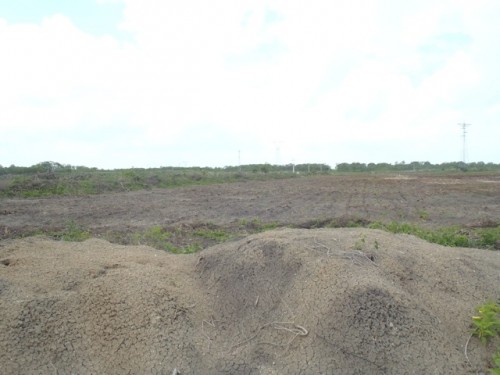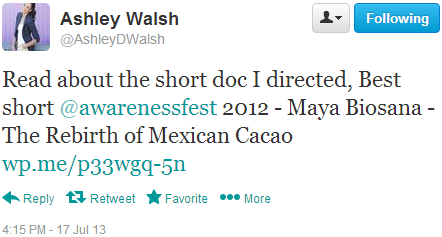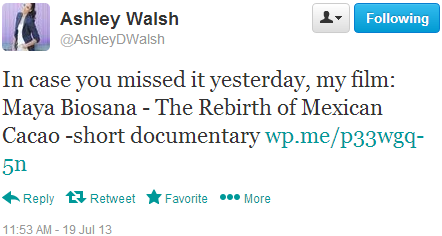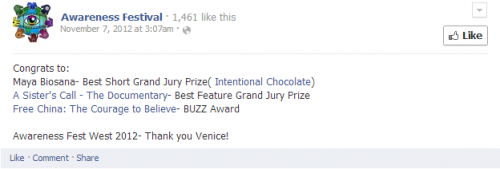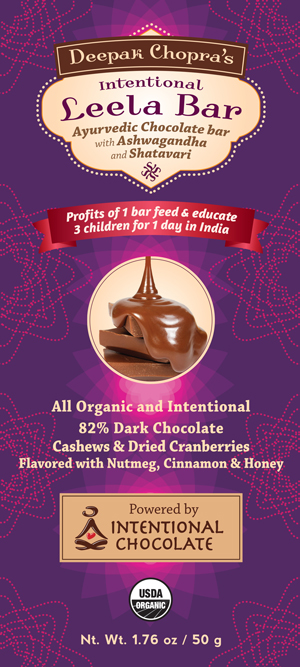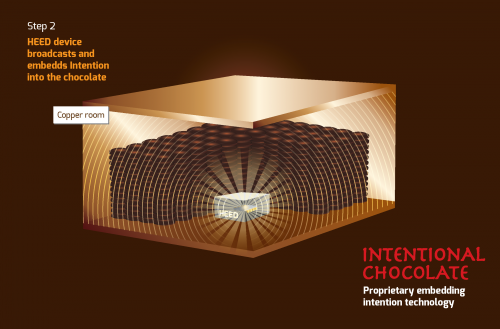Chocolate 101 class at Formaggio Kitchen
Next Thursday, December 12, 2013, from 6:30-8:30pm, I’ll be teaming up with my favorite local specialty shop, Formaggio Kitchen, to teach a Chocolate 101 class. The tasting line up for this event will explode your mind and knock your socks off. If that sounds good to you, join us! Cost is $55 per person, sign up here.
Intentional Deception
This post is the result of research conducted over several months in collaboration with chocolate maker Steve DeVries, who has for a number of years now followed the events described below, and whose insights were invaluable to the writing process.
What if I were to tell you that a person could carefully meditate over food, mentally impressing it with an intention at will? People who consumed the food would directly benefit (or suffer) based on that embedded intention. In other words, if you accept this, then you must accept that food blessed with intention can have measurable effects on one’s well being, beyond the psychosomatic. What if I were then to tell you that there exists an electrical device into which one can embed intention through guided silent meditation? Special memory chips in this device capture and store the physical correlates of one’s meditated intention, programming it for later use. Once readied, the electrical device “is placed inside a shielded room for five days,” where it broadcasts the recorded intention, literally embedding it into several hundred pounds of chocolate. Would you believe me if I told you that scientific studies have shown that eating chocolate embedded with the additional ingredient of intention increases overall well being by 67%?
People are selling chocolate based on these claims. And people are buying it.1
What follows is a summary of a decades-long project to sell chocolate based on a litany of unsubstantiated claims and false promises.
Jim Walsh and Hawaiian Vintage Chocolate
In the late 1980s, James “Jim” Walsh, a former marketing executive from Chicago, began working with the Hershey Foods Corporation and Amfac Hawaii, a land development company, to revive cacao growing in Hawaii.2 While cacao cultivation had met with some initial excitement in the mid-1800s when the plant was first brought to Hawaii, interest in the early 1900s was complicated by the two World Wars. Walsh’s Kakela Enterprises and his partners were successful in a small-scale reincarnation of cacao growing on the islands, and reportedly had other plans to continue this expansion and possibly even open a factory that would double as a tourist center.3
However, the cacao growing project did not materialize as planned, and Walsh was sued first by Hershey (Hershey won), and then in a series of additional lawsuits throughout the 1990s, making him a habitual defendant. Here is a list of seven additional lawsuits naming Walsh as a defendant that I was able to quickly gather via the Hawaii State Judiciary website4:
1CC90-0-003132 HERSHEY FOODS CORP VS KAKELA ENTERPRISES INC ETAL
1CC90-0-002779 GECC FINANCIAL CORP VS HAWAII COCOA ETAL
1CC91-0-000927 BANK OF HAWAII VS HAWAII COCOA JT VENT ETAL
1CC91-0-000742 WARD COURT DEV CO VS HAW COCOA JT VENTURE ETAL
1CC91-0-002737 FIRST INTERSTATE BANK VS HAWAII COCOA JT VENT ETAL
1CC90-0-003984 FIRST INTER BK OF HI VS HI COCOA JT VENTURE ETAL
1CC91-0-000819 DOBOVAN PRODUCTIONS INC VS HAW COCOA JT VENT ETAL
This list is not meant to be exhaustive; it is possible that there are more lawsuits yet to be uncovered.
Undeterred by the failure with Hershey, Walsh founded a new company, Hawaiian Vintage Chocolate (HVC), with the goal of producing chocolate made from Hawaiian cacao. In 1994, the company released its first chocolate, made partially with cacao from the Big Island, though by 1997 it began wholly substituting foreign cacao in its products due to significant crop failures. After four years, HVC was investigated by the State of Hawaii Department of Agriculture for falsely claiming that it used chocolate made from Hawaiian cacao and ordered to stop making such claims.5 Today, HVC cacao origins are explained as follows6:
As agricultural conditions vary from year to year and season to season, each year’s product will contain a different percentage of cocoa beans from Hawaiian Vintage Chocolate’s proprietary cacao genetics developed in Hawaii and now grown worldwide. Our commitment to you is that the quality of Hawaiian Vintage Chocolate products will remain unchanged. The HVC chocolate making process coupled with meticulous craftsmanship produces what many consider to be the world’s finest tasting chocolate.
According to its website, HVC is now a “public development company (OTC:HWVI) creating products, brands, and marketing opportunities, utilizing its unique assets. The company is a leading developer and innovator of gourmet varietal and functional chocolate.”7 However, some of the most basic facts about HVC, currently trading in the Pink Sheets for $.0061 per share, remain unclear and unsubstantiated. Others are completely false.
For example, the HVC website boasts:
“Which chocolate did Bill Gates, the man who can have it all, insist upon serving at his wedding? Which brand did the Dalai Lama choose for his very first taste of chocolate? … The answer is what the New York Times calls ‘…the best in the world….’ HAWAIIAN VINTAGE CHOCOLATE.”
When put to the test, these claims do not hold. No evidence beyond a number of websites linked to Jim Walsh business ventures and journalistic articles citing these websites exists to prove that HVC was served at Bill Gates’ wedding. Similarly, the claim that the Dalai Lama chose HVC for his first taste of chocolate is unsubstantiated. An educated guess would lead many to believe that this is false; His Holiness is a long-time known chocolate lover, and media routinely reports his ordering of chocolate at restaurants and being presented with gifts of chocolate at events.8 The quote from the New York Times is also a bold misrepresentation. The author of the article in question refers to Hawaiian cacao and chocolate and states the following: “They say the chocolate, the first ever grown commercially in the United States, can hold its own with the best in the world.” Later, a chef is quoted as saying: “[Hawaiian chocolate is] like the chocolate you get from Venezuela and Costa Rica, which is the best in the world.” Nowhere does the article refer to Hawaiian Vintage Chocolate as the best in the world.9
These are just the tip of the iceberg when it comes to the deceptive and problematic claims made by Walsh about Hawaiian Vintage Chocolate.
Intentional Chocolate
In 2007, Walsh began a new venture, launching a “revolutionary varietal chocolate” (note: that means nothing) under the name Intentional Chocolate, based on a preliminary account of the claims described at the beginning of this article. According to the Intentional Chocolate website10:
[Intentional Chocolate] is scientifically proven to invigorate and heighten a person’s sense of well-being. It is the truest expression of our goals for living intentionally, doing no harm, and benefitting others. At Intentional Chocolate we are trying to change the way people understand food by introducing them to Organic Chocolates embedded with intention and energy. We took the world’s finest chocolate, Hawaiian Vintage Chocolate, added concentrated positive intention, and created Intentional Chocolate™, an edible, sensual experience of well-being.
Like with HVC, there are a number of doubts to these claims. Intentional Chocolate suggests the use of HVC as the base for its product, vaguely hinting that the cacao comes from Hawaii without stating it outright. There are also over a dozen claims to celebrity endorsement on the site which merit further investigation given HVC’s accuracy failures.11 That said, a number of major publications have covered the company’s work, including Oprah.com.12
The chief claim about Intentional Chocolate’s value is based on “the science of infusing intention” into chocolate, which in itself is based on research documented in a sole article entitled “Effects of Intentionally Enhanced Chocolate On Mood” and co-authored by Jim Walsh. The conclusion of the study is: “The mood-elevating properties of chocolate can be enhanced with intention.”
This research is deeply problematic on many levels (several problems with the design of the study and inconclusive claims made in the article have already been detailed).13 Scientifically or statistically literate individuals looking for a good laugh can check out the full PDF of the absurd article.14 Perhaps most perplexing in the article is the repeated mention of the use of an electrical device designed “based on the concept of an intention-imprinted electrical device,” of which no further description or specification is provided. The reader is simply required to “take their word for it” that such a device exists and has been proven to work. The article was published in an obscure peer-reviewed journal, Explore: The Journal of Science and Healing, and has, according to Google Scholar and Web of Knowledge, only been cited a few times.
Walsh expresses his beliefs about Intentional Chocolate in this video, demonstrating that they are based in an Orientalist (mis)understanding of meditation and intention in Tibetan Buddhism:
(Note: the claim that cacao has the highest antioxidant count of any plant is false.)
More details on the beliefs behind Intentional Chocolate emerge from this interview with Walsh’s daughters, both involved in the family business.15
And this bizarre YouTube video, starring Walsh’s daughter Ashley, gives a sense of the new age belief in the mystical unknown required to benefit from Intentional Chocolate.
Maya Biosana
In 2009, Jim Walsh embarked on another chocolate business venture, this time in Quintana Roo, Mexico in partnership with Mexican politician Fernando Manzanilla.16 Little information exists about this project, called Maya Biosana, beyond a sprinkling of articles from the Mexican news media. According to an Intentional Chocolate blog post written by Ashley D. Walsh, introducing the project and a short film she directed about it, entitled: “Maya Biosana – The Rebirth of Mexican Cacao, A short documentary”17:
In 2009 Jim Walsh and Fernando Manzanilla had a vision to create the world’s largest Intentional organic cocoa fields working with social entrepreneurship in the Mayan community in Mexico. I was lucky enough to helm the filming of this project over 2 years as the place was transformed from rural Mexico, home of a dwindling Mayan town into a now blossoming entrepreneurial city growing cacao fields and supporting their local community.
This film follows Maya Biosana, as it repositions Mexico as the largest organic cocoa producer in the world and bringing the sacred plant back to it’s birth home. Improving the quality of life in Mexico with it’s vision of collaboration, co-creation and intention by providing the local and surrounding communities with a new model of business utilizing their own proprietary Well Being index as the marker of change.
Since this video was filmed the town has expanded and grown two-fold.
The film won the best short Award in 2012 at the Awareness Festival,http://www.awarenessfestival.org/
Watch Walsh’s 13 minute film here:
The film suggests that the Maya Biosana partners set out to collaborate with Mayan communities in the Yucatan to combine large scale cacao planting and social entrepreneurship. Jim Walsh, and to a lesser extent Manzanilla, are portrayed as heroes arriving to remind the beleaguered Maya of the richness of their culture and provide them with direction to a new kind of business. Images of a Maya shaman blessing and praying over the land are interspersed with interviews with Walsh and Manzanilla in which they share their non-specific vision for the project and express gratitude for the lessons the Maya have taught them about community. The extensive footage of mature cacao trees in the film is misleading at best as it does not depict the region in question; only the greenhouse cacao tree seedlings shown in the film were actually being grown on land linked to Maya Biosana.
To date, four years after its supposed founding, none of the cacao farming plans that Walsh and Manzanilla made have come to fruition. The site Geo-Mexico has posted two well-researched articles on the Maya Biosana project, evaluating the claims and available evidence surrounding this project.18,19 In sum, the project appears to have been dead in the water since at least December 2012. The Mexican government requested the return of 15 million pesos (about 1.14 million US dollars) when the promised cacao farms failed to materialize.
These two photographs were taken by Steve DeVries on June 21, 2013, on the ground where the film claims healthy cacao trees are growing.
This has not, however, stopped Ashley D. Walsh from continuing to promote herself as director of the Maya Biosana documentary. As recently as July 2013, she tweeted the following20,21:
In a Twitter exchange where I requested more information, she referred me to the Maya Biosana website, which had no content then and continues without content, as well as the Leela Bar website, which has nothing to do with the project (explained in detail below).22
The only evidence of the film’s having won an award, as claimed in her tweets, is from this Facebook post.23
It is irresponsible and dishonest for this film to be used for the purposes of self-promotion without any mention of the project’s dissolution and the failed promises to the affected communities in Mexico.
The HESA Institute
In 2009 or 2010, Walsh founded The HESA (Human Energy Systems Alliance) Institute. The Institute’s website explains24:
The HESA Institute, through its revolutionary alliance of leading scientific institutions and researchers, is engaged in the discovery and development of pathways, techniques and disciplines that harness consciousness. Our mission is to use the results of our research to create innovative products that transform human health, energy, nutrition and longevity.
By advancing its research initiatives, the HESA Institute is dedicated to exploring scientifically the proposition that: Consciousness is a fundamental force or mechanism that can, among other things, control or cause change in the human energy field, as well as, potentially, the universal field.
Like the other Walsh ventures, The HESA Institute website is brimming with problematic, unsubstantiated claims about its collaborators and research. First, there is no proof that any of the described potential research initiatives are ongoing. In fact, the publications to which the site links are not actually associated with the site, but rather are PDFs of peer-reviewed articles published in medical and scientific journals that contain no mention of HESA (e.g. this multi-author article, “Light-activation of the Archaerhodopsin H+-pump reverses age-dependent loss of vertebrate regeneration: sparking system-level controls in vivo” published in Biology Open).25
Next, when introducing the Institute’s collaborators, the language used is: “Principal Alliance Members have included over the years,” followed by a long list of names. The phrasing is such that it is possible these members are not currently aligned with HESA in any meaningful way. While my research is not conclusive, I have yet to uncover evidence of these individuals officially listing HESA as an affiliation of theirs on their own websites or professional biographies. For example, Professor Michael Levin, one of the authors in the above-mentioned article and Principal Investigator at the Levin Lab at Tufts University, includes no mention of an affiliation with The HESA Institute anywhere on his official professional website or in his biosketch.26
Jim Walsh’s biography on the HESA site is also riddled with inaccuracies. He claims to serve on the advisory boards for the Center for Creating Healthy Minds at the University of Wisconsin-Madison and the Institute for Advanced Studies in Spirituality and Wellness at the Chicago Theological Seminary. The latter claim is unsubstantiated and no supporting evidence can be found. The former is false; the University of Wisconsin-Madison Center is actually called the Center for Investigating Healthy Minds, and does not list Walsh as an Advisory Board Member.27 Moreover, this NYPost article includes a quote from the Center’s Founder, Dr. Richard J. Davidson, stating that he was promised funds by Walsh that never materialized,28 in reference to another promoted but failed venture.29
This promotional video for HESA includes numerous obviously absurd claims, as well as a number of questionable suggestions of association with universities, companies, and organizations.
For example, the logos for University of Wisconsin-Madison, Harvard University, Bial (a Portuguese pharmaceutical company), and Imagina México (an organization devoted to studying well being in Mexico) are displayed in the video, hinting at some link with The HESA Institute, while no such affiliations are substantiated.
Despite these many issues, Walsh continues to list his work at The HESA Institute as primary in his title in recent documents (see The Consciousness Project, below).
Deepak Chopra, The Consciousness Project, and the Leela Bar
In July of 2013, celebrity New Age health guru Deepak Chopra announced a partnership with Jim Walsh called The Consciousness Project. In a blog post entitled “Cracking the Cosmic Code,” they stated the following:
As founders and backers, we are announcing a major initiative to solve the epic problems that the world faces. Leading the way is global warming, with its eventual threat of mass extinction if worse comes to worst. But climate change is linked to globalization, economic upheaval, overpopulation, and hostile tensions in the world’s hot spots. The link, we believe, is consciousness, and the only way to solve our epic problems is to arrive at an understanding of consciousness that will benefit humanity.
To address the issue of consciousness, the statement goes on, they will plan to invest $1 billion over the course of five years, focusing on “three primary areas of development – well-being, communications, and intentional technology.”30
Shortly thereafter came the release of The Leela Bar, marketed as “Deepak Chopra’s Intentional Ayurvedic chocolate bar.“ Like many of the “feel good” chocolate bars on the market, the product includes a dizzying array of promises: it is powered by Intentional Chocolate, Ayurvedic with Ashwagandha and Shatavari, USDA label organic, the profits of one bar feed and educate three children for one day in India, and it contains 82% dark chocolate, cashews, dried cranberries, nutmeg, cinnamon, honey, and vanilla.
The Leela Bar website claims the following, based on the same principles as Intentional Chocolate, still wholly unsubstantiated by any evidence of either the existence of such a device or its efficacy31:
Intention is embedded into the chocolate through an embedding device called HEED™ (Human Energy Embedding Device™). Deepak and Rita used a guided silent meditation (no vocal tones) while focusing the intention on the electronic HEED™ circuit, which is designed to capture physical correlates of Intention in special memory chips. Once programmed with Intention, the device is placed inside a shielded room for five days along with several hundred pounds of chocolate. It is then set to broadcast the informational patterns associated with the recorded intentions. The combination of a well shielded environment and exposure to the stored intentional patterns embeds the chocolate.
The underlying principles that govern this process are currently being modeled in the realm of basic science, primarily based on the concept of a participatory universe suggested by Princeton physicist John Wheeler, in which matter and energy are emergent properties of quantum information.
These images from the site illustrate the process to hilarious effect.
You can also listen to Deepak Chopra’s spoken explanation of the embedded intention on the website.32
As one might have come to suspect after reading all of the evidence above, this venture has not been without its troubles. The New York Post recently published two articles: “Deepak Chopra sues ex-partner over $5M donation”33 and “Deepak Chopra’s former partner has history of business failures.”34 The articles detail a developing legal situation between Deepak Chopra and his now-former partner, Jim Walsh, following a dispute over funds earmarked for Chopra’s foundation to which Walsh has laid claim. In short, Chopra is publicly suing Walsh, distancing himself from the dissolved partnership in the process.
Add intentional deception to the long list of failed Walsh ventures.
Trevor Bass, Romi Burks, and Scott of DallasFoodOrg provided generous guidance at various stages of the research and editing process, for which I am grateful. All errors are my own.
The following public Diigo group list contains links and cached versions of the dozens of websites and PDFs that have informed this research: https://groups.diigo.com/group/chocolate-con
Steve DeVries and I will continue to update this list as the situation develops. In the meantime, please contact me at any time to share additional information or with questions, comments, or concerns.
Update November 5, 2013, 4:30pm. Two photos taken by Steve DeVries on June 21, 2013, were added to the post in the Maya Biosana section.
- http://leelabar.com/intention/ [↩]
- http://digitalcollections.library.cmu.edu/awweb/awarchive?type=file&item=620740 [↩]
- http://www.csmonitor.com/1989/0307/fchoc.html/(page)/2 [↩]
- http://hoohiki1.courts.state.hi.us/jud/Hoohiki/main.htm?spawn=1 [↩]
- 1. http://the.honoluluadvertiser.com/article/2010/Jan/25/bz/hawaii1250312.html, 2.
http://the.honoluluadvertiser.com/article/2003/Jun/29/bz/bz01a.html [↩] - http://www.hawaiianchocolate.com/growing_chocolate.html [↩]
- http://www.hawaiianchocolate.com/news_info.html [↩]
- e.g. http://www.chow.com/food-news/2820/the-dalai-lama-loves-him-some-veal/ [↩]
- http://www.nytimes.com/1994/05/11/garden/aloha-to-a-new-chocolate.html?pagewanted=all&src=pm [↩]
- http://www.intentionalchocolate.com/company.php [↩]
- http://www.intentionalchocolate.com/company_profile.php [↩]
- http://www.oprah.com/spirit/Spiritual-Chocolate-Chocolate-and-Mood [↩]
- http://www.metabunk.org/threads/debunked-effects-of-intentionally-enhanced-chocolate-on-mood.175/ [↩]
- http://media.noetic.org/uploads/files/Effects_of_choc.pdf [pdf] [↩]
- http://lifeandthyme.com/interview/intentional-chocolate/ [↩]
- http://www.linkedin.com/in/fernandomanzanilla [↩]
- http://intentionalchocolate-blog.com/2013/07/17/maya-biosana-the-rebirth-of-mexican-cacao-a-short-documentary/ [↩]
- http://geo-mexico.com/?p=6523 [↩]
- http://geo-mexico.com/?p=9752 [↩]
- https://twitter.com/AshleyDWalsh/status/357609474715947010 [↩]
- https://twitter.com/AshleyDWalsh/status/358268344786370561 [↩]
- https://twitter.com/carladmartin/status/368481081101529089 [↩]
- https://www.facebook.com/permalink.php?id=178528135052&story_fbid=10151219078340053 [↩]
- http://www.hesainstitute.com/ [↩]
- http://www.hesainstitute.com/wp-content/uploads/2013/03/dany-and-kellys-optogenetic-tail-paper.pdf [pdf] [↩]
- http://ase.tufts.edu/biology/labs/levin/people/ [↩]
- http://www.investigatinghealthyminds.org/cihmPeople_Board.html [↩]
- http://nypost.com/2013/10/25/deepak-chopras-former-partner-has-history-of-business-failures/ [↩]
- http://www.businesswire.com/news/home/20101116006657/en [↩]
- https://www.deepakchopra.com/blog/view/1212/the_consciousness_project__hopeful_solutions_for_epic_problems_ [↩]
- http://leelabar.com/intention/ [↩]
- http://leelabar.com/the-meditation/ [↩]
- http://nypost.com/2013/10/23/deepak-chopra-sues-ex-partner-over-5m-donation/ [↩]
- http://nypost.com/2013/10/25/deepak-chopras-former-partner-has-history-of-business-failures/ [↩]
Chocolate class by the numbers
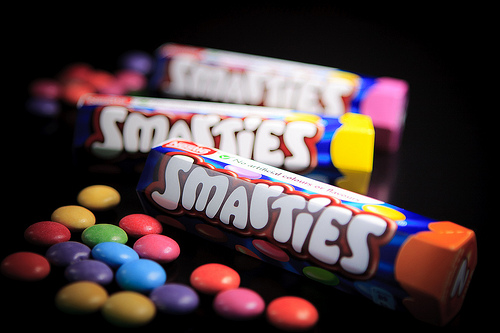
Image courtesy of Paul Coles
The spring semester has ended, and so has the adventure that has consumed my thoughts and energies over the past few months. The course African and African American Studies 119x: Chocolate, Culture, and the Politics of Food, or, to use my students’ more efficient moniker, “Chocolate,” is now complete. I learned a great deal through teaching Team Chocolate (aka The Chocolate Army, aka the wicked smahties), some of which I hope to share as I reflect on the class this summer and tweak it for next spring’s iteration.
Many have inquired about the logistics of the class, so here is a basic data summary.
CHOCOLATE CLASS BY THE NUMBERS
Note: most figures approximate
Overall
175 students (estimated enrollment by registrar: 16 – whomp!).
25 lectures (25 hours), including 5 guest lecturers.
11 weekly teaching fellow-led section meetings (11 hours per week for 11 weeks; 121 hours overall).
4 films (7 hours total).
Reading
100 pages of reading per week; 1,300 pages total.
These readings have covered 12,000 years of history, taking us from the early botanical origins of the theobroma cacao tree all the way up to present day developments in the fine chocolate industry.
Assignments
5 assignments.
5,000 words total writing per student (20 double spaced pages); 900,000 words for the entire class (3,500 double spaced pages), around 1.5 copies of War and Peace.
30 pieces of multimedia included in assignments per student; 5,250 for the entire class.
Worked to master several new digital skills using the tools TimelineJS, Storify, Google Drive (spreadsheet, presentation, document).
Teaching
5 graduate student Teaching Fellows.
30 hours of office hours per Teaching Fellow; 180 total for the entire teaching staff.
2/3 of the class met with me in office hours or before or after class.
Nearly everyone met with a Teaching Fellow at least once, often multiple times.
???,??? emails sent among Teaching Staff, among Teaching Staff and students, and among students (many thousand, and still counting).
Behind the scenes hours devoted by teaching staff to lectures, tastings, assignment guidelines, teaching and grading meetings, photocopies, reading scans, section plans, grading: 150 hours per week (6 days a week); 2,300 hours (94 days) over the course of the semester.
Tastings
7 guided chocolate tastings.
18 samples of chocolate and chocolate components.
50 pounds of chocolate eaten by entire class.
Per student: 600 calories, 50 grams of sugar, 30 grams of fat.
For the class: 100,000 calories, 9,000 grams of sugar, 5,000 grams of fat.
Social media
250 posts submitted to our course Tumblr, Bittersweet News.
I will be creating a course project gallery over the next weeks to make much of our student work available in one place for the public to see. It will potentially include:
120 historical timelines.
175 Storify blog posts.
60 advertisement presentations.
Based on these figures, I think it’s fair to say that we have created a significant legacy!
The Harvard Gazette also provided thoughtful coverage of one of the major themes of our class in this article, which features images of and quotes from several students.
New course: Chocolate, Culture, and the Politics of Food
I’m teaching a couple of new courses at Harvard University this semester. It seems only fitting to celebrate the two-year anniversary of this blog by sharing a detailed description of one of them, a direct outgrowth of the work that I’ve been documenting here. The course is entitled African and African American Studies 119x: Chocolate, Culture, and the Politics of Food.
Here’s a goofy Zeega trailer that I made to advertise the course last semester:
So far the course has had an exhilarating beginning. Harvard’s Pre-Term Planning figures indicated that I should expect 16 students in the class, which turned out to be a slight underestimation. On the first day 120 students patiently squeezed into a room designed for 60, then on the second day 165 filled up a newer, larger room. We’re presently three weeks into things, and it looks like our final enrollment figures will settle somewhere in the 190s. We are now comfortably ensconced in our third and final lecture hall, which is a perfect fit our large brood. I guess I shouldn’t have been surprised – come on people, it’s a class about chocolate ![]() .
.
A phenomenal team of graduate student teaching fellows has also been assembled to teach students in weekly small group section meetings. They hail from fields as diverse as African and African American Studies, Romance Languages and Literatures, Inner Asian and Altaic Studies, and Studies of Religion, and have expertise in Haitian Vodou, the American prison system, the history of Islam, and medieval European food culture. Each member of the team has a unique perspective on the course materials that greatly enriches our ability to reach students from a wide variety of disciplines. Combined, we have decades of award-winning teaching experience to dole out.
The course does not involve any traditional written papers or exams (perhaps another reason for the large enrollment?); all of the assignments employ digital tools and apps (e.g. TimelineJS, Storify, Glossi, Google Drive) that will allow students to practice new research skills, design attractive multimedia online products, and add to the body of public scholarship on chocolate. The students in this course are fantastic — they’re engaged with the materials, always ready to contribute to discussions, bursting with productive energy, and hungry for both sweets and knowledge. I will update the blog throughout the semester with information on the results of their work.
Thanks to the generosity of many, I’ve also been able to assemble an exciting line up of guest speakers and to plan several guided in-class chocolate tastings. Students will additionally be encouraged to take advantage of local chocolate-relevant collections at Harvard’s Peabody Museum (Maya and Aztec cacao vessels) and Schlesinger Library (cookbooks and advertisements), the Museum of Fine Arts (early American chocolate serving pots), and numerous chocolate shops (e.g. L.A. Burdick Chocolates Cafe, Taza Chocolate Factory). More on all this and other open access course materials in coming weeks.
Without further ado, here’s a summary of the syllabus:
African and African American Studies 119x: Chocolate, Culture, and the Politics of Food
Spring Term 2013
Mondays and Wednesdays, 2-3pm + weekly section
Course Description
This course will examine the sociohistorical legacy of chocolate, with a delicious emphasis on the eating and appreciation of the so-called “food of the gods.” Interdisciplinary course readings will introduce the history of cacao cultivation, the present day state of the global chocolate industry, the diverse cultural constructions surrounding chocolate, and the implications for chocolate’s future of scientific study, international politics, alternative trade models, and the food movement. Assignments will address pressing real world questions related to chocolate consumption, social justice, responsible development, honesty and the politics of representation in production and marketing, hierarchies of quality, and myths of purity.
Goals
Gain subject matter expertise:
- on the history, culture, and taste of cacao and chocolate;
- on slavery, trade systems, and business ethics; and
- on big, pressing questions related to food politics, corporate social responsibility, the representation of race and gender in advertising, and labor rights and global trade.
Develop skills:
- to engage profoundly with a large body of interdisciplinary primary and secondary sources of varying quality;
- to conduct historical, ethnographic, and digital research;
- to better understand analog and digital scholarship and media and how we store/find/share/create knowledge; and
- to communicate critically and thoughtfully through discussion, writing, and multimedia.
Create knowledge:
- by working on our own and in a collaborative, hands-on environment;
- by documenting the history and anthropology of chocolate; and
- by proposing creative solutions to pressing problems in the chocolate industry and making these solutions available to chocolate companies and the general public.
Course Texts
The following three foundational course texts are supplemented by book chapters, articles, websites, and films.
- Presilla, Maricel. 2009. The New Taste of Chocolate, Revised: A Cultural & Natural History of Cacao with Recipes. Berkeley: Ten Speed Press.
- Coe, Sophie D. and Michael D. Coe. 2007[1996]. The True History of Chocolate. 2nd edition. London: Thames & Hudson.
- Mintz, Sidney. 1986[1985]. Sweetness and Power: The Place of Sugar in Modern History. New York: Penguin Books.
Course Schedule
Unit 1: Origins
Week 1: Introduction
Week 2: Mesoamerica and the “food of the gods”
Week 3: Chocolate expansion
Week 4: Sugar and cacao
Unit 2: Growing Cacao, Making Chocolate, Selling Sin
Week 5: Popular sweet tooths and scandal
Week 6: Slavery, abolition, and forced labor
Week 7: The rise of big chocolate and race for the global market
Unit 3: Representation, Labor, and the Ethics of Trade
Week 8: Race, ethnicity, gender, and class in chocolate advertisements
Week 9: Modern day slavery
Week 10: Alternative trade and virtuous globalization
Unit 4: Eating Chocolate
Week 11: Health, nutrition, and the politics of food
Week 12: Terroir and taste
Week 13: The food movement, haute patisserie, and artisan chocolate: the future?
Chocolate Books of 2012
While 2011 was a busy year for publishing on chocolate (see last year’s summary list here), 2012 ushered in a dizzying array of chocolate-related books from multiple genres. Below, you’ll find my picks for several of the best, as well as some from my to-read list.
If there are other recently published books that you don’t see listed here, I would love to hear your recommendations.
Note: It is the case with many of the chocolate cookbooks listed below that they will teach you surprisingly little about cacao and chocolate (and some of it will even be wrong). By all means, get chocolate-centric cookbooks for the recipes and inspiration, then couple them with a text that focuses on source ingredients cacao and chocolate like Presilla’s The New Taste of Chocolate: A Cultural & Natural History of Cacao with Recipes for a more meaningful introduction to the topic.
Happy reading!
Cookbooks/Technique books
Gran Cocina Latina: The Food of Latin America
2012 brought us another masterpiece from award-winning chef and scholar Maricel Presilla — Gran Cocina Latina. This cookbook, with more than 500 carefully researched recipes from Latin America, spans the genres of culinary history and ethnography. An entire section of the book is devoted to cacao and chocolate. It is of interest to chefs, home cooks, food travelers, and scholars.
The Elements of Dessert
A must read for hardcore pastry and cooking science geeks, this beautiful cookbook from celebrated pastry chef Francisco Migoya has over 200 recipes for exquisite, elaborate modern desserts.
Chocolates and Confections: Formula, Theory, and Technique for the Artisan Confectioner
This text is a standard for pastry chefs, bakers, and chocolatiers, now in its second edition. It has been significantly expanded and revised to include new recipes, formulas, and business advising sections.
Bouchon Bakery
This book has been everywhere this year — prominently displayed in bookstores, on several “best of” lists, and occasionally even selling out on Amazon. The praise is well-deserved, as the recipes, mixed with fun anecdotes from Keller, are instructive and scrumptious. The photography and design make the book worthy of coffee table fame, if you can tolerate the looking without cooking.
The Blue Bottle Craft of Coffee: Growing, Roasting, and Drinking, with Recipes
A book not about chocolate, but another celebrated bean — coffee. This is an excellent, instructive text that takes the reader from coffee plant to tastebud. To the best of my knowledge, a similar book does not exist in the craft chocolate world (Presilla’s comes closest, perhaps), but one should.
Original 1896 Boston Cooking-School Cook Book
A reprint of an American classic, of interest and use for almost all home kitchens. Historical chocolate recipes, too!
Professional Baking
The sixth edition of a canonical educational text on baking.
Sugar and Spice: Sweets and Treats from Around the World
Gaitri Pagrach-Chandra is an award-winning food historian and writer. In this text, she has collected over 120 clear recipes for sweet treats from around the world. Stories and images make this book equal parts good read and useful cookbook.
The Liddabit Sweets Candy Cookbook: How to Make Truly Scrumptious Candy in Your Own Kitchen!
For DIY enthusiasts and candy lovers, this cookbook from the popular Liddabit Sweets brand clearly explains home candymaking with fun flavor twists. The photos are lovely and instructive, and the authors’ humor is entertaining.
Luscious Chocolate Desserts
For the reader who wants alluring pictures and mouthwatering, well-tested chocolate recipes designed for home cooks, this cookbook from Lori Longbotham, a former food editor at Gourmet, does not disappoint. 65-plus recipes, clear instructions, and easily-located ingredients make this ideal for someone obsessed with chocolate but new to cooking with it.
I’m Dreaming of a Chocolate Christmas
Award-winning chef and pastry chef Marcel Desaulniers provides 72 delectable chocolate Christmas recipes for home cooks. Includes a section on packing and shipping treats as gifts.
Rococo: Mastering the Art of Chocolate, Chantal Coady
Rococo is an elegantly branded product line from one of Britain’s top chocolatiers, Chantal Coady. In this exquisitely designed book, Coady tells the story of her business and provides a selection of plainly written recipes. Also great for display and gifting.
Chocolate to Savour, Kirsten Tibballs
Kirsten Tibballs, Australian chocolatier, pastry chef, Callebaut representative, and founder of the Savour Chocolate and Patisserie School in Melbourne, offers plainly written recipes for enthusiasts in this debut cookbook.
Patrick Roger, en quète de chocolat, Patrick Roger, Jean-Marc Dimanche
Eccentric French chocolatier Patrick Roger has here collected stunning photographs of some of his most celebrated chocolate sculptures, from an exhibit series that illustrates the dangers of deforestation to animals. These remarkable works of chocolate art feature orangutans, gorillas, polar bears, elephants, and more. In French.
Chocolat Café, Pierre Marcolini
Belgian chocolatier Pierre Marcolini has produced a cookbook that brings together chocolate and coffee. The text has recipes, photos, advice on chocolate and coffee pairing, and stories from Marcolini’s life. In French.
Chocolat, Christophe Felder, Domitille Langot
Noted French pastry chef Christophe Felder’s enormous cookbook has approximately 200 recipes for chocolate and pastry, ranging from simple to challenging, traditional to innovative. Felder offers advice on tasting, flavor pairing, and working with chocolate. A good fit for pastry chefs and adventurous home cooks. In French.
Chocolat Menier, Vincent Boué, Hubert Delorme, Didier Stéphan, Héloïse Martel
This cookbook is the stuff of nostalgia for any who grew up eating Menier chocolate. Nearly 300 easy-to-make classic recipes for the home cook. In French.
Nonfiction
Raising the Bar: The Future of Fine Chocolate
Author, entrepreneur, and educator Pam Williams has long been a leader in the chocolate industry. (Regular readers will note that I took an online course at her school, the Ecole Chocolat.) Jim Eber, her co-author, is a specialist in food and business marketing. In this important text, they survey the current state of the chocolate industry — from cacao genetics to farms to marketing to the art of the chocolatier. A must-read for the serious chocolate geek.
Chocolate Islands: Cocoa, Slavery, and Colonial Africa
This travel narrative from historian Catherine Higgs traces the travels of Englishman Joseph Burtt, hired by Cadbury Brothers Limited to investigate claims of forced labor on the cacao plantations of Sao Tome and Principe, through Africa. Burtt’s early twentieth century “fieldwork experience” of sorts, and subsequent slow, but deliberate reporting on the abuses he witnessed played a role in influencing a number of important changes in African labor practices and chocolate industry ethics. (This history is detailed in different form in Lowell J. Satre’s Chocolate on Trial: Slavery, Politics, and the Ethics of Business) An important read for those interested in chocolate industry ethics, labor rights, African studies, and history of chocolate.
Taste Matters: Why We Like the Foods We Do
How do genes, maternal diet, culture, and physiology affect taste? Prescott ponders these questions in this fascinating, well-researched book. Interesting as much for the information it provides as for the potential it demonstrates for public health causes.
Coffee Life in Japan (California Studies in Food and Culture)
This book isn’t about chocolate, but it is about coffee culture, which presents interesting parallels and contrasts. A carefully researched, thoughtfully written history-ethnography-memoir about the experience of coffee in Japan.
Chocolate in Health and Nutrition (Nutrition and Health)
If ever there was an argument for keeping libraries well-funded, this book is one. Try to borrow it from the library if you can. (A WorldCat search shows where to find it.)
An academic text with a very high price point, this text is unique in its broad level scholarly, data-driven treatment of the research on chocolate and health.
The Science of Ice Cream
For ice cream professionals and serious enthusiasts, this book will not so much teach you how to make ice cream as about the science behind how ice cream is made.
On the Chocolate Trail: A Delicious Adventure Connecting Jews, Religions, History, Travel, Rituals and Recipes to the Magic of Cacao
Rabbi Deborah R. Prinze traces the historical connections between Jews, religion, and chocolate in this unique text. While at times the links drawn are slightly overstated, the author’s passionate writing makes for a fun introduction to the topic.
Chicago’s Sweet Candy History (Images of America)
A book of photographs with trivia mixed in, this is an enjoyable way to picture 150 years of Chicago’s confectionery history.
The Trebor Story: How a Tiny Family Firm Making Sweets in London’s East End Became Britain’s Biggest Sugar Confectioner, Creating Iconic Brands Before Selling to Cadbury and Later Kraft Foods, Matthew Crampton
The lengthy title more or less summarizes this book, written by a fan of the Trebor family business in an engaging style. Of interest to those studying business or confectionery history.
Du Cacao et Des Hommes, Voyages Dans le Monde du Chocolate, Alfred Conesa
French researcher Alfred Conesa spent six years traveling the world investigating cacao and the lives of people who care for it. His resulting book is organized in two parts – the first describes the history of the cacao tree, the second traces the metamorphosis of cacao fruit from its first indigenous uses to present day popularity. The book is illustrated with artwork by cacao producers. Of interest to anthropologists, historians, agronomists, indigenous studies scholars, and serious chocolate enthusiasts. In French.
Fiction
Peaches for Father Francis: A Novel
The third book in the best-selling Chocolat series, this story takes Vianne Rocher back to Lansquenet, the French village where readers first learned of her magical chocolates. While Harris’ descriptive style itself relies on stereotype, her writing makes the heavy themes of religious and cultural tolerance easy to stomach, and provides a heartwarming emphasis on the importance of food and chocolate to building community.
The Chocolate Thief
Paris, chocolate, romance, comedy — a fun read all around.
Sorcery and Cecelia or The Enchanted Chocolate Pot
A period drama fantasy, one reviewer aptly summed up this book’s style as “Jane Austen meets J.K. Rowling.” Plus there’s talk of an enchanted chocolate pot. An entertaining read for young (and young at heart) adults.
Palmeras en la nieve, Luz Gabas
Moving between colonial and present-day Fernando Pó (now called Bioko), the northernmost part of what is now Equatorial Guinea, the only Spanish-speaking African country, this novel is part dramatic intercultural love story, part ode to the magic of growing some of the world’s top cacao. The cacao is named Sampaka, just like the Barcelona-based company Cacao Sampaka (see what the author did there?). In Spanish.
Children’s Fiction
Sweet Coco: Chocolate Maker’s Apprentice
Perhaps the only children’s book to describe the process of taking cacao from bean to bar chocolate, following a young girl’s magical journey with her favorite chocolate maker. I found the story and rhyming cloying at times, but the book is nevertheless instructive and well-designed.
Too-Loose the Chocolate Moose, 30th Anniversary Edition
It’s not easy being a moose made of chocolate. This millenial childhood classic has been rereleased for its 30th anniversary.
Mercedes and the Chocolate Pilot
A moving, if somewhat romanticized, account of Operation Little Vittles, a candy drop initiative carried out by an American pilot during the Berlin Airlift of 1948-1949.
La fabuleuse histoire du gâteau au chocolat!, Orianne Lallemand
This colorfully illustrated children’s story tells the tale of a troublesome dragon wooed by chocolate cake (with recipe). In French.
Film
Romantics Anonymous
Ok, it’s not a book, but this French film is a delight! If you love chocolate, introverts, romance, and laughter, you must see it. In French with English subtitles.
What’s next on my chocolate reading list?
The Economic History of the Caribbean since the Napoleonic Wars
Are Cat Ears Made of Chocolate?: A Children’s Rhyme
Milton Hershey: Chocolate Man, script for theater
Better Than Chocolate (Life in Icicle Falls)
Chocolat chaud au parfum de nougat miel, Voltaire, Christophe Michalak
In French.
Cacao, Michèle Kahn
In French.
